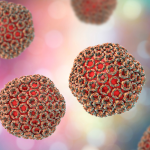In December 2022 The Vaccine Group (TVG) reported that a DARPA (Defence Advanced Research Policy Agency) funded project against Lassa fever had been successfully completed. The project began in April 2019 and has since met its 3 objectives.
Lassa fever and the project
Lassa fever is described by the CDC as a zoonotic “acute viral illness” that is spread by the common African rat. Endemic in parts of West Africa, it infects between 100,000 to 300,000 patients a year. About 5,000 deaths are recorded annually, but as surveillance varies across locations the CDC estimates are “crude”.
TVG and partners at UC Davis, California, received funding from DARPA to develop a transmissible vaccine to prevent Lassa fever virus circulation in the specific rodent population: the mastomys or multimammate rat. The team identified 3 objectives:
- Understand the virus ecology in wild mastomys rat populations in W Africa, especially cytomegaloviruses (CMV) and Lassa fever virus
- Create a computer model to use as a tool to predict the outcome of Lassa Fever control interventions in wild mastomys rats
- Develop a transmissible vaccine for use in wild mastomys rat populations for the control of Lassa fever circulation and to reduce the risk of human spillover.
Successful completion and plans
TVG states that “all objectives were completed successfully”. A species-specific CMV was isolated and “shown to be widespread in these populations”. These isolated strains were further honed based on “growth parameters in vitro”. When a candidate vector strain was selected to be the viral vector for the vaccine candidate, two “potentially protective” antigens were identified from Lassa fever virus. Their respective gene codons were optimised and inserted.
A lead candidate was selected, with a “transgene inserted into a single site in the CMV vaccine vector”. Furthermore, a continuous cell line with “potential for commercial scale production of the vaccine was developed” from the rat tissues. A small-scale trial batch was used in “controlled studies under Category 4 Biosecurity”. This proved the vaccine was immunogenic in inoculated animals and “transmissible to naïve co-housed cage mates”.
In the future, the data will be used to refine the computer model that was developed to predict the outcomes of Lassa fever control interventions. The next steps are further transmission and efficacy studies, followed by technical transfer for scale-up, and pilot field studies in endemic regions. “Continued engagement with stakeholders” is emphasised as “important to identify the environment in which the tools developed by this project can be deployed”.
A great result
Dr Jeremy Salt is CEO of TVG and described the project as “highly successful”.
“From a standing start in 2019 the global project team has pooled resources to enable the development of a candidate vaccine developed from a cytomegalovirus strain that was not even available before the project began.”
He looks forward to informing the strategies in place to “aid in the control of this important zoonotic viral pathogen in West Africa”.
For more on approaches to Lassa and lessons we should learn from it, come to the World Vaccine Congress in Washington in April 2023. We previously explored a partnership between IAVI and CEPI against Lassa fever. You can read more here.





